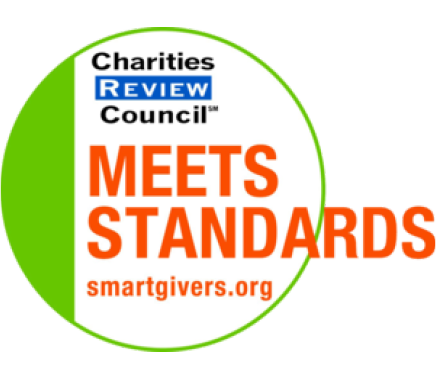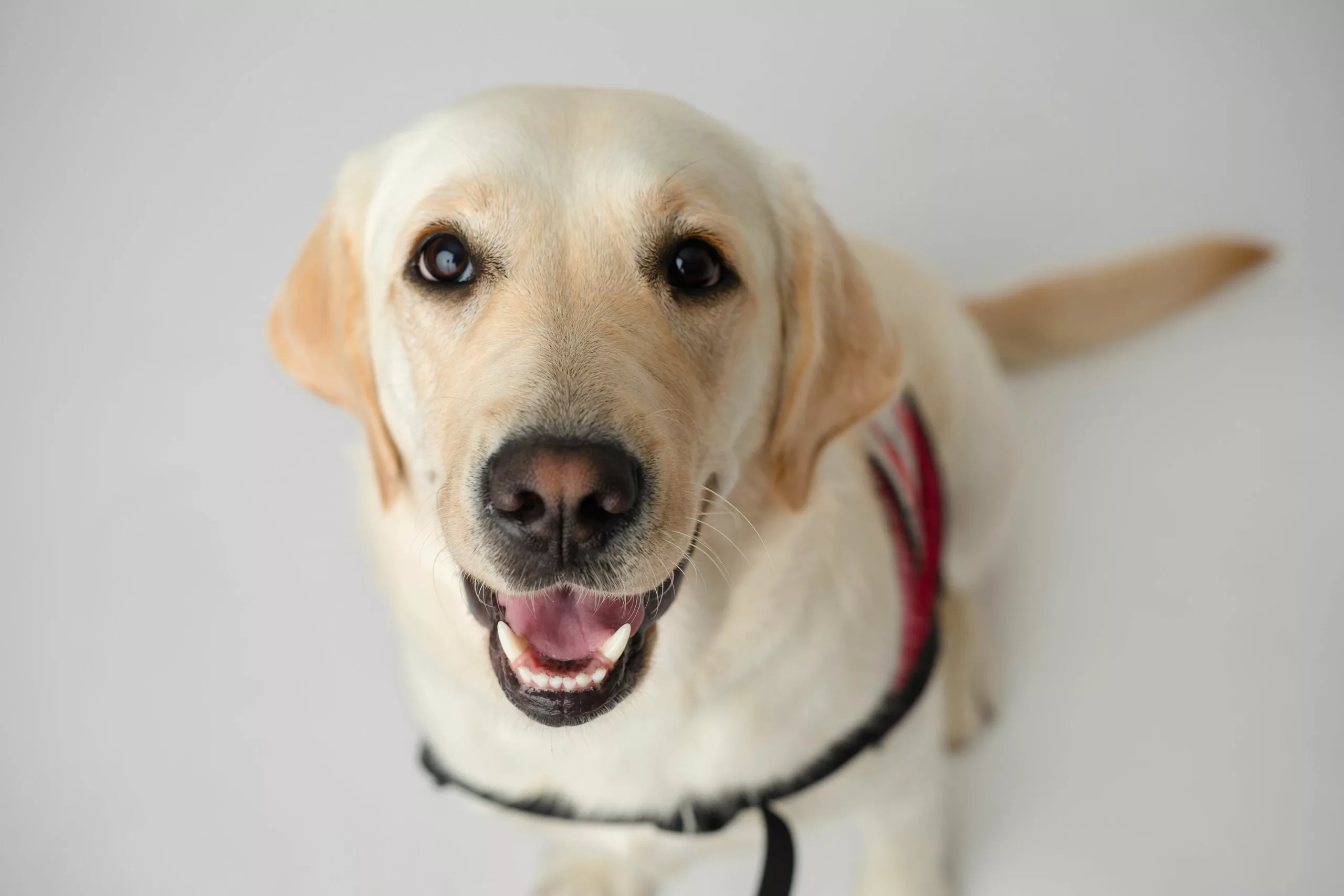In 2016 when he was 10 years old, Nicholas was matched with Autism Assist Dog Truly. His family wanted a dog that would help Nicholas from wandering, ease his anxiety, and comfort him at night. Truly has been … truly amazing. Recently, Nicholas asked his mom, Paula, “When can I go to Can Do Canines and tell them how much I love Truly and how much she helps me?” “Being a mom of a child with autism and a pediatrician, this is huge,” explains Paula. “People with autism have a hard time expressing feelings, verbalizing feelings, and a tremendously hard …
Feature Stories
A Different World
Kyle and Mobility Assist Dog Igor The summer before his senior year of high school, Kyle was in an ATV accident. He was riding along the North Shore when he lost control of the vehicle. It skidded off the road and into two trees. Kyle was flung forward, hitting each of his shoulders onto a tree, causing his helmet to come loose. The result was a broken C5 and C6 vertebrae in Kyle’s neck, paralyzing him from the chest down. “That, of course, flipped my world upside down,” says Kyle. Having been the captain of the football team, his senior …
Getting and Giving
Beth and Diabetes Assist Dog Fiona By Bobb Elsenpeter For Beth, a Diabetes Assist Dog is essential. With the dangers posed by rapidly falling blood sugar, the more advanced notice she has, the better. Fiona was teamed with Beth after her first Diabetes Assist Dog, Faith, a 7-year-old Black Labrador Retriever suddenly passed away. And although the loss of one’s assistance dog is naturally difficult, Beth says that she went into the new partnership with the wisdom of important lessons under her belt. “I knew so much more so I could be a better leader for [Fiona] and not make …
Feeling Whole Again
Sky and Trigg In three years Sky’s world was completely turned upside down. She was a partner in an antique shop, combing the area for perfect additions to the store. But in 2005, she had surgery to remove a melanoma. Unfortunately, a reaction to the anesthesia caused a stroke, which entailed months of rehab to recover her mobility and help with cognitive issues. Then in 2006, Sky suffered an ATV accident quickly followed by a fall, resulting in multiple seizures and an extended hospital stay. Doctors couldn’t definitively say the resulting traumatic brain injury caused the seizure activity. After a …
A Nudge in the Right Direction
Greg and Hearing Assistance Dog Duke By Amy Verrando Greg was only in his 20s when he learned he had Meniere’s disease, an inner ear disease that causes progressive hearing loss, tinnitus, and, in some cases, vertigo. Over the years, Greg received two cochlear implants to help combat his hearing loss. Samantha, Greg’s daughter, lives with him part-time. Samantha worried about her father. “She was pretty nervous about me being alone at night, smoke alarms specifically,” Greg says. And he was afraid he would sleep through his alarm, and found himself unable to sleep soundly through the night. So when …
Volunteer Spotlight: Diana Adamson and Paul Oberhaus
If you attended the graduation ceremony last month, you would have seen graduate Greg Landeen and Mobility Assist Dog Nellie take center stage. And alongside them the volunteers who made Nellie possible: Puppy Raisers Diana Adamson and Paul Oberhaus. Vocalizing what a lot of us are thinking, graduate Greg says, “It’s amazing that people are doing this on a volunteer basis. I can’t imagine what it’s like to have a dog that’s this awesome and then have to say goodbye to her. Thank you, thank you, thank you!” Throughout their 17 years of service, Diana and Paul have given much …
Maintaining a Lifetime of Independence
Amy Sabot and Mobility Assist Dog Mable By Bobb Elsenpeter Amy Sabot’s life was forever changed when she had a stroke—at just 7 years old. “My brother went to get my mom up—she had just come back from the nursing home where she worked—and he said, ‘I think Amy had a stroke. But kids don’t have strokes,’” Amy remembers. After several more strokes at the hospital, Amy’s right side was affected by hemiparesis, a partial weakness on one side of the body. Her family helped her learn to adapt with walking, daily care, and activities, and she continued to adjust …
Volunteer Spotlight: Gwen McMahon
Gwen McMahon has worn a lot of different hats over the past 25 years as a volunteer for Can Do Canines. You read that correctly—25 years! Can Do Canines was in its early years when it first came in contact with Gwen. “Can Do Canines was located just four blocks from where I lived 25 years ago. I am very interested in dogs, and so I set out to find out what they did. As a retired social worker, their mission to help those in need resonated with me.” Gwen continues, “I did whatever was needed at first. I served …
Making Milestones Possible
Megan Grosskreutz and Mobility and Hearing Assist Dog Zoe By Erin Reyes One of the biggest milestones of a young adult’s life is moving out of the family home. But the possibility of doing so seemed far-fetched for 25-year-old Megan Grosskreutz whose parents were often hesitant to leave her alone at home. “I can’t hear people at the door,” explains Megan. In fact, there have been several instances in which family members have walked into the house and Megan didn’t know it until they were face-to-face. But Megan’s parents don’t just worry about her safety when it comes to Megan …
A Lot Has Changed In Nine Years
“It’s really interesting where the training was nine years ago and what it is now,” says Mary. The second-time graduate of Can Do Canines experienced a much different training process when she was matched with her first Diabetes Assist Dog, Ebony, nine years ago. After nine years of dedicated service, Ebony has entered retirement. “Ebony told me she was ready to retire,” explains Mary. The 10-year-old dog was becoming tired, and didn’t enjoy spontaneity like she once did. “I just had to respect that. She was done and I had to listen.” Once Ebony was enjoying retirement, Mary needed to …





